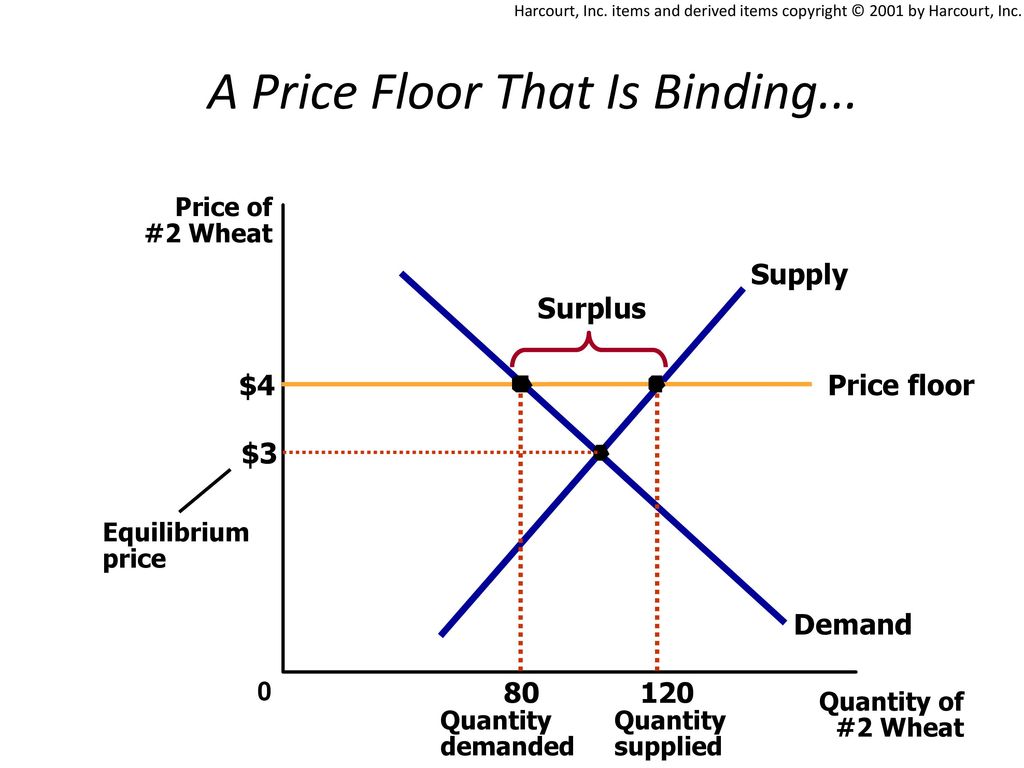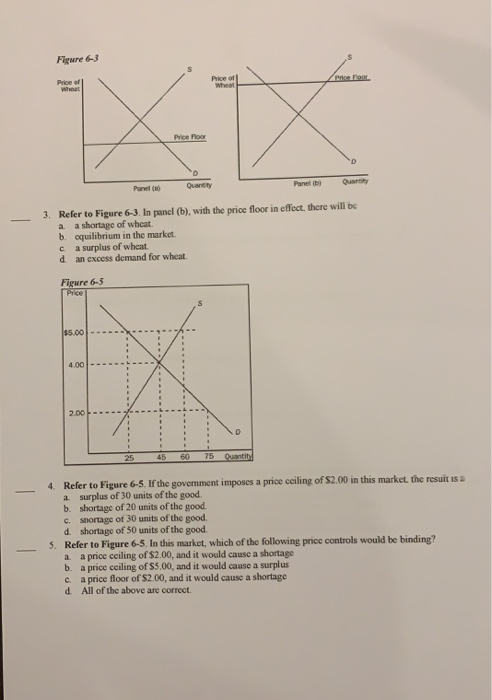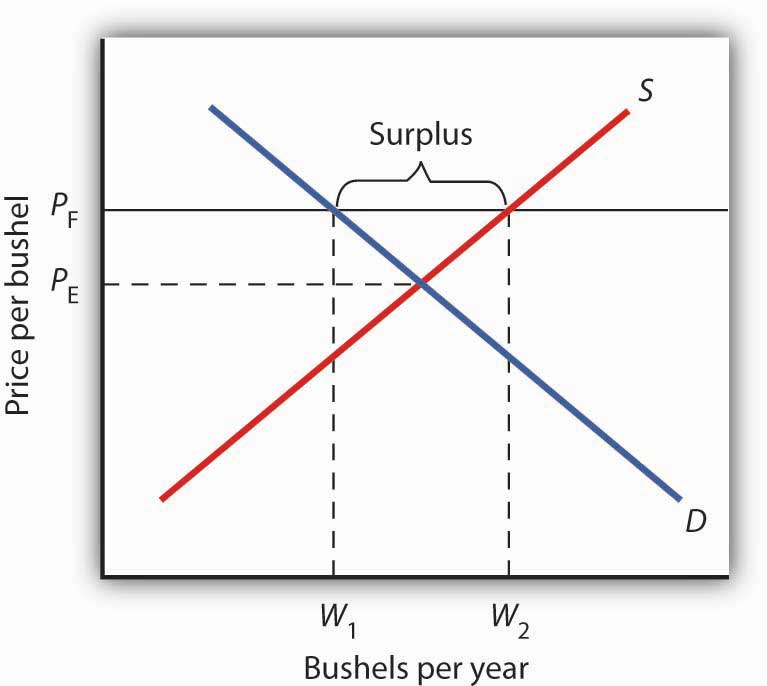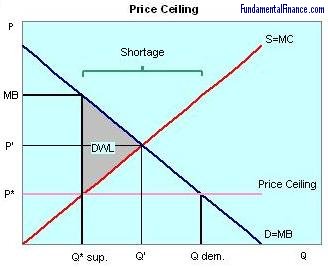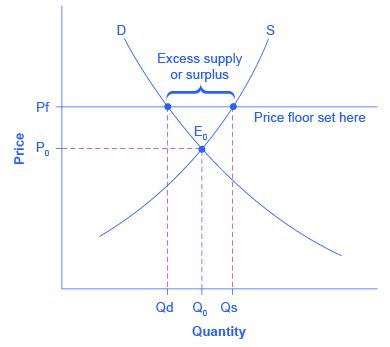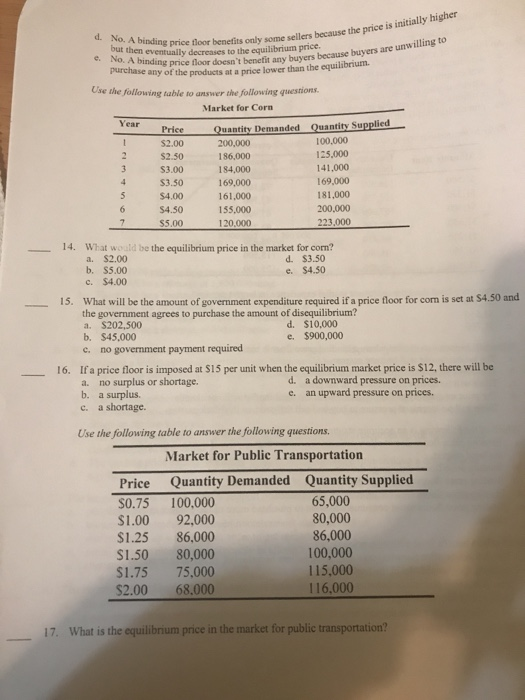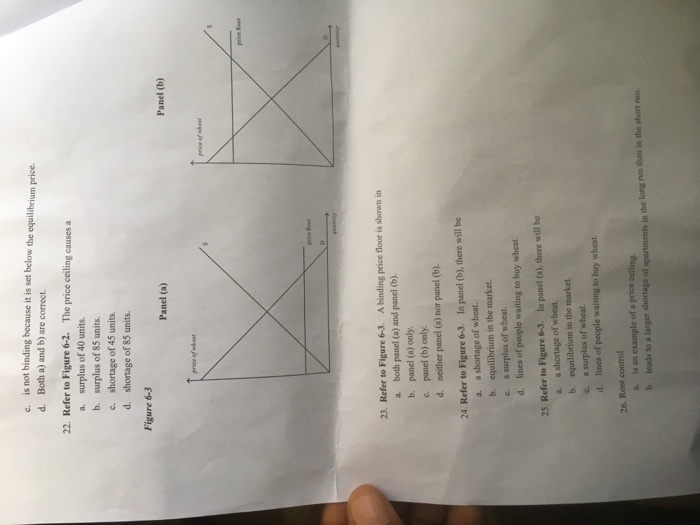Perhaps the best known example of a price floor is the minimum wage which is based on the view that someone working full time should be able to afford a basic standard of living.
A binding price floor in the market for wheat.
This is a price floor that is less than the current market price.
Suppose the government sets the price of wheat at p f.
The equilibrium price commonly called the market price is the price where economic forces such as supply and demand are balanced and in the absence of external.
A non binding price floor is one that is lower than the equilibrium market price.
A price floor is a form of price control another form of price control is a price ceiling.
A price floor must be higher than the equilibrium price in order to be effective.
Suppose the government imposes a binding price floor in the market for wheat that is above the equilibrium price of wheat.
The intersection of demand d and supply s would be at the equilibrium point e 0.
However a price floor set at pf holds the price above e 0 and prevents it from falling.
The result of the price floor is likely to result in.
A price floor is the lowest price that one can legally charge for some good or service.
A price floor is a government or group imposed price control or limit on how low a price can be charged for a product good commodity or service.
A price floor that is set above the equilibrium price creates a surplus.
A price floor example.
Consider the figure below.
The result of the price floor is that the quantity supplied qs exceeds the quantity demanded qd.
Notice that p f is above the equilibrium price of p e.
Figure 4 8 price floors in wheat markets shows the market for wheat.
Consumers are always worse off as a result of a binding price floor because they must pay more for a lower quantity.


